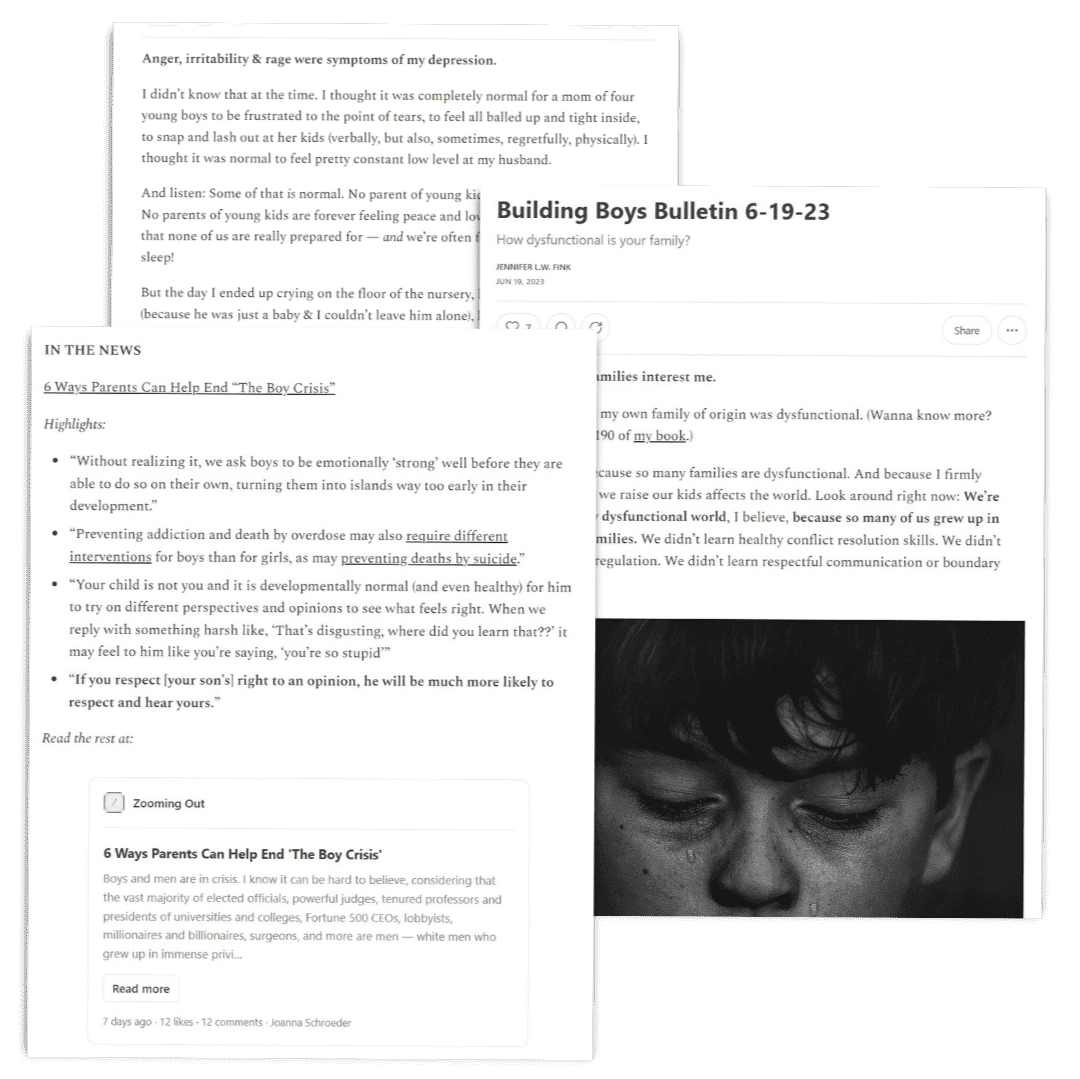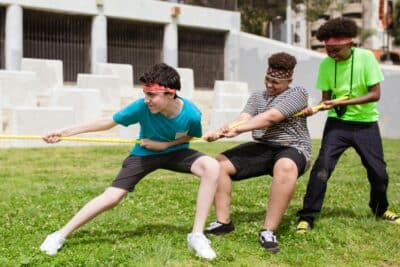
Recently, I had the chance to talk with Warren Farrell, PhD, chair of the Commission to Create a White House Council on Boys & Men and author of The Myth of Male Power, Why Men Are They Way They Are and Women Can’t Hear What Men Don’t Say. Dr. Farrell outlined what he considers the five components of the Boy Crisis facing our boys and country today. He’s what he had to say. — Jennifer
There are five crisis areas that boys and men are suffering through. One is physical health. Another is mental health. Boys commit suicide much more frequently than girls. For example, at the age of 10, boys and girls commit suicide at exactly equal rates. But as boys become men, their hormones change and our attitudes and expectations towards them change, and the suicide rate for boys ages 11 to 14 twice as high as girls’. Between the ages of 15 to 19, it’s four times as high, and between ages 20 to 24 it’s between five and six times as high as girls’.
If this was reversed and the girls’ suicide rate during adolescence was going from equal to boys to five or six times boys’ suicide rate, we would all know about this and we would be all concerned about this. We would all say, This results from our attitudes towards femininity and women, and we would all be trying to change that, as we should.
The third crisis area is education. It’s the only crisis area that many people are aware of…People are much more conscious of the way boys are falling behind in education. It used to be that 61% of the people going to college were males and 39% were females. By 2020, it’s projected to be the exact reverse of that: 61% females and 39% males.
In many ways, everything that is boy positive has been cut back in the schools. They’re cutting back on recess and play on playgrounds is becoming more and more restricted. Competition is going away and schools are becoming a super protective environment.
The fourth crisis area is careers. In the old days, a boy who was not academically oriented could be a mechanic or a laborer, could work in construction or manufacturing and so on. But to a large degree, the jobs that are available have gone from muscle to mental, and so increasingly, falling behind in education also means falling behind in careers.
In the old days, welder was a physical job. Today to be a good welder, you have to know a lot about physics and chemistry and other things, yet the schools are cutting back on vocational education.
The final and firth issue is the image issue. In 2008, the Dallas Area Rapid Transit (DART) had huge billboards on a public buses with a picture of a boy saying, ‘When I grow up I will kill my wife,’ and pictures of a black girl saying, ‘When I grow up I will be killed by my husband.’
Imagine somebody taking their children through the streets of Dallas and children seeing buses like this…these ads paint boys in such an extraordinary negative image… it is unimaginable that if the reverse could be true that a boy could be on the bus and saying, when I grow up I will be killed by my wife, or when I grow up I’ll be killed by a black person, or when I grow up I’ll be ripped off by a Jewish person. You know what I’m talking about? Those types of things…wouldn’t even go through the first layer of bureaucracy, no less the tenth layer to get on a public bus.
This is the world into which our sons are entering.
All is not lost, though. Dr. Farrell and many others are working hard to make a better world for boys. Stay tuned for our next post, in which Dr. Farrell explains how a White House Council on Boys & Men can help boys, families and society.







2 Responses
We must learn to think, not in the present character of boys or girls but learn to see both genders as equal at birth, then taught to be very different in their characteristics and abilities. I referring to areas of “supposed” intelligence, activity, learning styles, etc. We need to learn to understand how much differential treatment from first year of life onward is creating very large differences in academic growth and competition in the information age. When we can see how differential treatment is creating these differences, we can then use these variables as wonderful tools to help all students, boys and girls, continually change and improve their lives. Notice this problem is also affecting Male children in higher socioeconomic areas, so everyone should be aware this problem exists in their communities also. We need to understand how Males living in lower socioeconomic environments and more time in those environments are affected much more so by more allowed catharsis of stress upon Male children to make them tougher and more set in place physical attributes of physical training, both from learned helplessness in academics and more reliance on physical areas of work.
We need to can and flush the false genetic models of learning. We need to see stress as very different, made up of many laeyrs of mental work we all carry with us from past, present, future concerns, problems, fears, preparations for defense, and fewer adequate cognitive and social tools to deal with more complex information and social needs. We need to see how differential treatment or more aggressive treatment and less supportive, kind, mental, emotional, social, verbal interaction creates higher average stress that takes away real mental energy and shortens reflection time from children. It creates much more social emotional distance from others/adults/teachers. This creates more activity for stress relief; much lower social vocabulary that combined with higher average stress and shorter reflection time hurts performing the abstract skill of reading enjoyment that requires more mental energy to decode, visualize, reach into social vocabulary to learn new words in print, reflect and organize information, and enjoy the process. We need to see how the higher muscle tension creates more pressure on pen/pencil and a tighter grip that hurts writing/motivation to write.
We need to see how this differential treatment is then maintained by peers and teachers that maintains and even heightens more distrust of adults and maintains more aggressive treatment of Male children false believing this is just the way Male children are. We need to reverse and learn to help change the way we treat our Male children from a very young age.
I read his book and I could not put it down at all. I also recommend “Reaching up for manhood” by Geoffrey Canada.